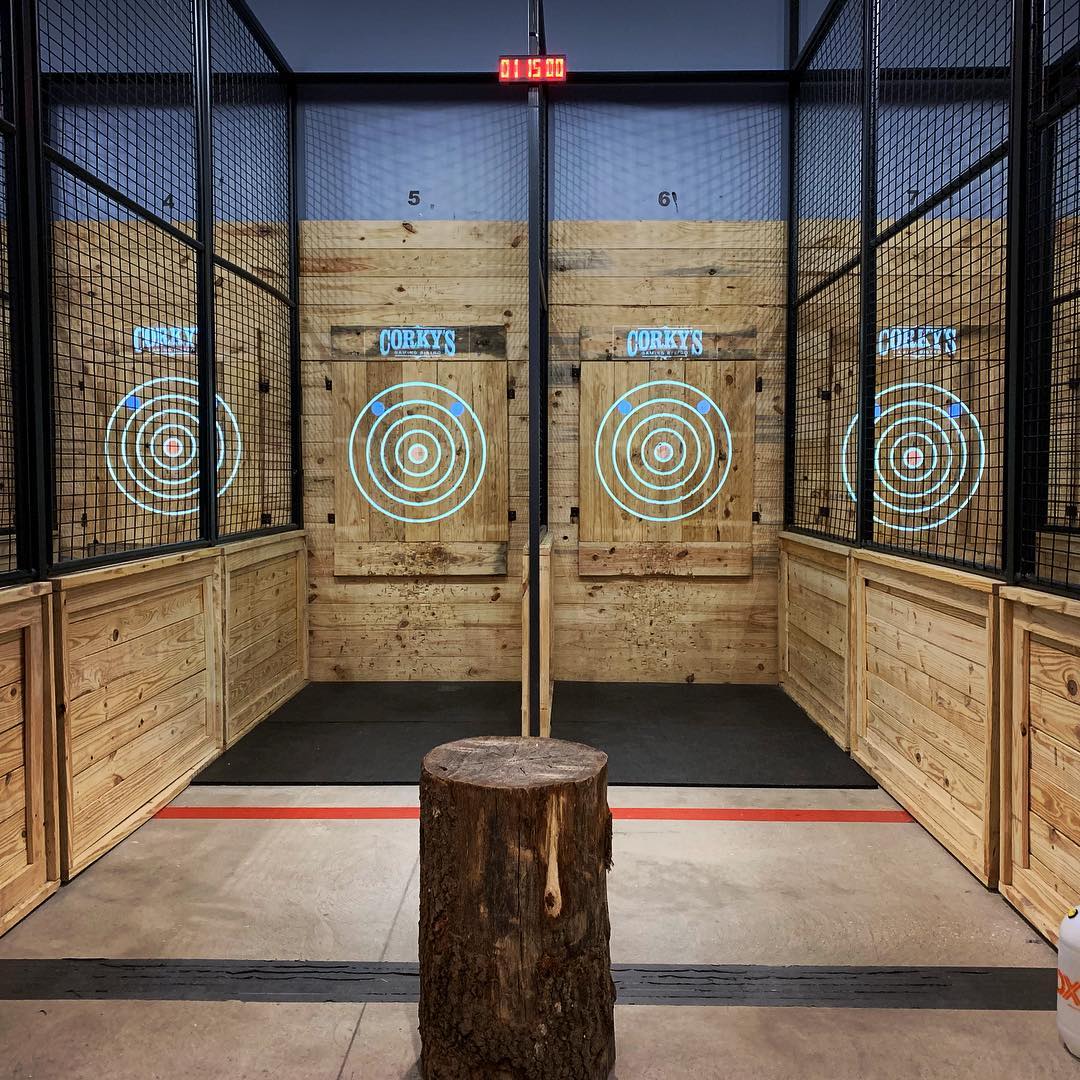Fun and Competition Await at Ax Throwing Denver: Join a League Today
Fun and Competition Await at Ax Throwing Denver: Join a League Today
Blog Article
The Fun of Axe Throwing: Exactly How This Sporting Activity Combines Skill and Adrenaline for a Good Time
Axe throwing has actually arised as an astounding sport that masterfully intertwines the requirement for specific ability with the thrill of adrenaline, offering participants a interesting and unique experience. The act of hurling an axe towards a target demands concentration and method, simultaneously fostering an atmosphere of camaraderie and friendly competition. This fascinating mix of psychological emphasis and physical exertion has made axe tossing a preferred selection for those looking for both recreation and a feeling of success. To absolutely value the deepness and appeal of this activity, one should consider its origins, the needed tools, and the fundamental methods that ensure both safety and satisfaction.
The Beginnings of Axe Throwing
Axe throwing, a recreational activity that has gotten significant appeal over the last few years, traces its origins back to ancient times. This primitive sport days back to early human background, when axes were largely utilized as tools and tools. The earliest records of axe usage in competitive contexts are located among the Celts and Vikings, who tossed axes for sport as well as in fight training. The method was not simply an activity however a critical skill for survival and warfare.
Middle ages European warriors, especially throughout the Center Ages, exercised axe throwing as component of their martial training. The Francisca, a sort of tossing axe made use of by the Franks, became famous for its fatal precision. This standard tool was developed to be tossed at adversary guards and armor, showcasing its double utility in both sport and battle.
In even more recent background, axe throwing saw a resurgence in the logging camps of North America in the 20th and 19th centuries. Lumberjacks would take part in pleasant competition, checking their accuracy and strength by focusing on wooden targets. This evolution from a survival skill to a leisure activity has actually led the way for its modern-day revival, with dedicated places and organizations now celebrating the sport around the world.
Devices You Need
Comprehending the rich history of axe throwing enhances the admiration of the sport's modern iteration. Central to this thrilling task is the tools, which is crucial for both safety and security and efficiency. The main tool is, obviously, the axe. For leisure and affordable axe throwing, the most typically used type is the hatchet, generally weighing between 1.25 to 2 pounds with a handle length of around 16 inches. The axe must have a sharp, well-maintained blade and a deal with made from long lasting wood or composite product, ensuring an excellent hold and balance.
Similarly important is the target. Guideline targets are created from wood, with softwood selections like ache or cottonwood being chosen for their capacity to hold the axe and absorb. The target is usually separated right into five concentric circles, each with a certain factor value, to assist in rating.
Security gear, though frequently neglected, is vital. Safety handwear covers can enhance grasp and avoid sores, while closed-toed footwear are a should to safeguard feet from gone down axes (axe throwing denver). Ultimately, a well-lit, large throwing location, complete with security obstacles, guarantees a regulated environment where individuals can concentrate on refining their abilities.
Standard Techniques Described
Understanding the basic techniques of axe throwing is important for both security and efficiency. The initial technique to comprehend is the grasp. Hold the axe with a company, yet unwinded hold, comparable to holding a golf club. The leading hand needs to be placed straight below the axe head, while the non-dominant hand supports the end of the handle.
Following, concentrate on the position. Stand with your feet shoulder-width apart, guaranteeing your body is stabilized. Your leading foot needs to be a little onward, straightening with your target. This positioning help in maintaining security and routing power properly in the direction of the target.

Security First
Making certain security in axe throwing is vital to producing a pleasurable and injury-free experience. Precaution begin with the location layout. A properly designed axe tossing facility features clear separations between tossing lanes, sturdy backdrops to catch roaming axes, and non-slip flooring to stop crashes. Furthermore, adequate illumination is vital to assist participants preserve visual precision and spatial understanding.
Benefits of Axe Throwing
Axe throwing offers a myriad of benefits that expand past basic entertainment. The repetitive movement of throwing the axe also enhances hand-eye sychronisation and great motor skills.
Mentally, axe throwing requires technique, focus, and accuracy, making it an excellent means to develop cognitive abilities. The concentration needed to hit the target can offer as a type of mindfulness, allowing individuals to clear their minds and minimize anxiety. This mental involvement can be specifically advantageous in aiding individuals create better analytical skills and mental durability.
Socially, axe throwing is usually enjoyed in team setups, cultivating team-building and sociability. Whether as part of a company occasion or a casual getaway with close friends, the sport motivates interaction and collaboration. Furthermore, the communal experience of discovering and improving together can strengthen connections and produce lasting memories.
Final Thought

The earliest records of axe usage in competitive contexts are discovered among the Celts and Vikings, who threw axes for sporting activity as well as in fight training. Launch the axe when your hands are approximately at eye degree, allowing the axe's natural rotation to direct it towards the target.
A properly designed axe tossing facility attributes clear separations between tossing lanes, strong backdrops to catch stray axes, and non-slip flooring to avoid accidents. Participants should be imp source instructed on the appropriate means to manage and toss the axe, stressing regulated, calculated motions over look what i found powerful throws.
In summary, axe tossing stands out as a sport that masterfully integrates accuracy, skill, and adrenaline.
Report this page